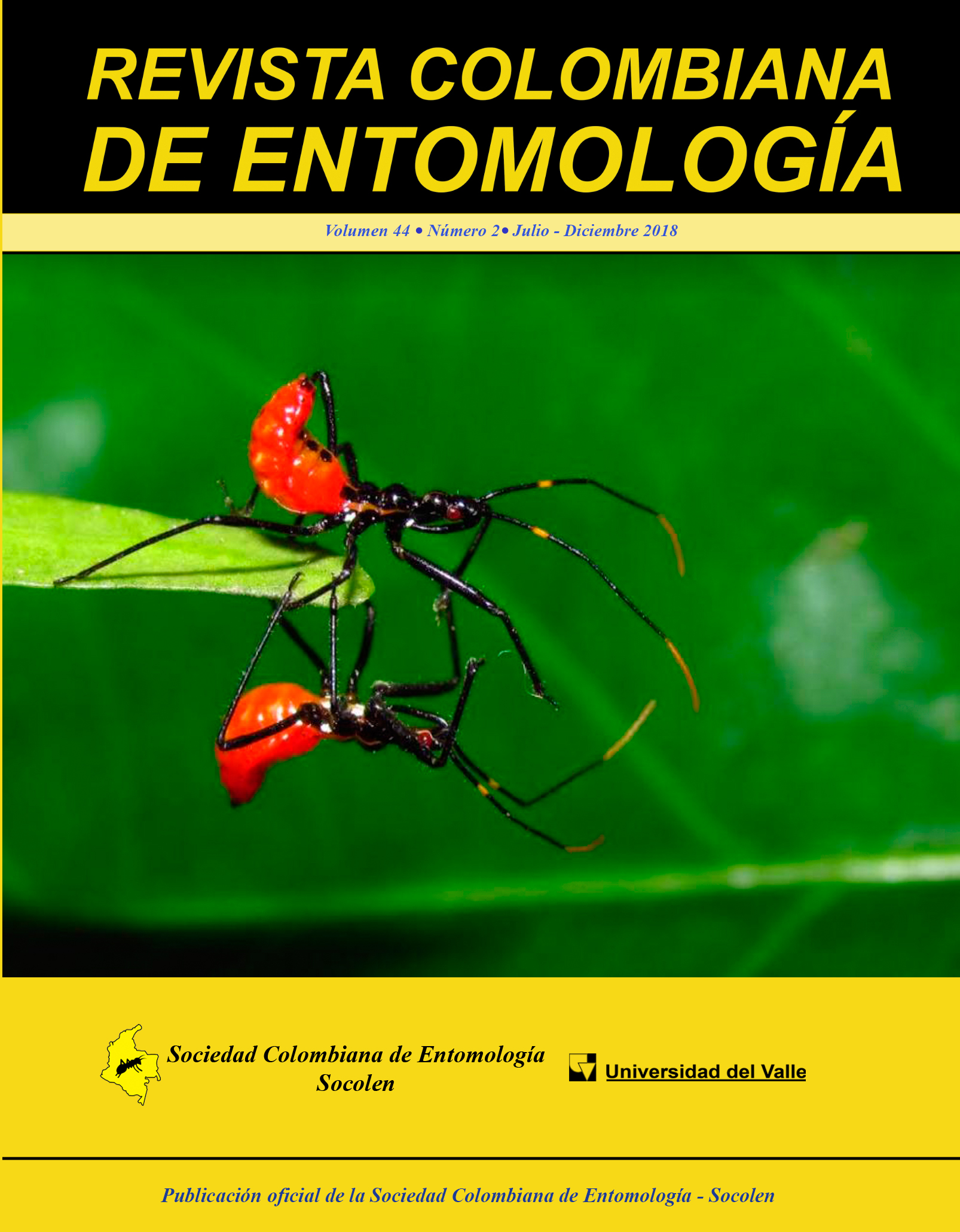Phenotypic plasticity in Heliconius erato (Lepidoptera: Nymphalidae) mandibles induced by different host plants (Passifloraceae)
Keywords:
Heliconian butterflies, larvae morphology, mandibular allometry, feeding adaptationsMain Article Content
This study aimed to test whether the consumption of different host plants influences the size and shape of mandibles and associated muscles in oligophagic insects throughout ontogeny. Larvae of Heliconius erato phyllis (Lepidoptera: Nymphalidae) were reared on four species of passion vines (Passifloraceae) and had the size of their head caspules, mandibles and associated adductor muscles measured afterward. Corresponding effects on shape and potential allometries in mandibles were also evaluted using geometric morphometric analysis based on scanning electron micrographs. Growth in mandibular size was greater compared to that of associated adductor muscles. There was no host plant effect on the sizes of either mandibles or adductor muscles. However, the shapes of mandibles was significantly different among passion vine species used as larval food. Greater differences in shape associated with wider teeth were obtained for Passiflora suberosa, whose leaves are tougher compared to those of P. misera, P. caerulea, and P. actinia; and, among which there was no difference in manbilular shape. Thus, it was inferred that the larval stage of this Heliconius species is able to adjust its mandible shape according to the toughness of host plants; a phenotypic plasticity mechanism that can be supposed to have evolved in order to facilitate processing these kinds of leaves.
Downloads

This work is licensed under a Creative Commons Attribution-NonCommercial-ShareAlike 4.0 International License.
Authors retain the copyright on their work and are responsible for the ideas expressed in them. Once a manuscript is approved for publication, authors are asked for a publication license for the term of legal protection, for all territories that allows the use, dissemination and disclosure of the same.

